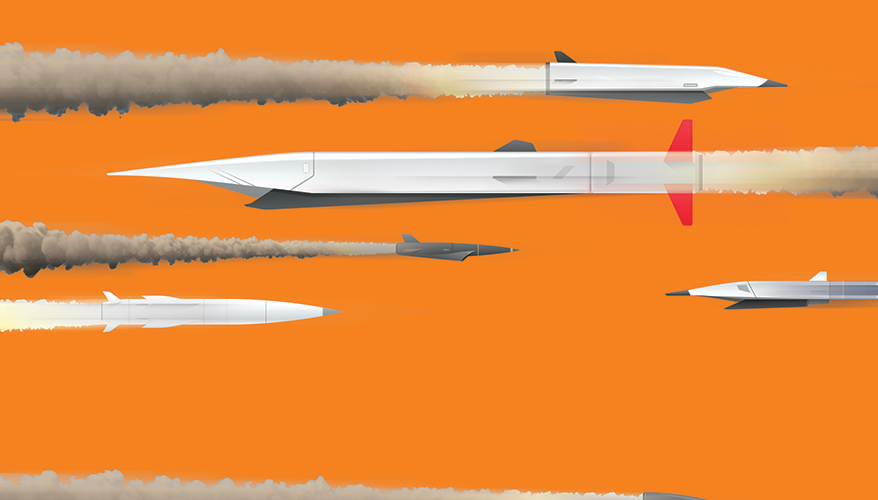EMERGING TECHNOLOGIES
New Facility Brings Enhanced Testing for Hypersonics, Lasers
By Laura Heckmann

iStock illustration
A testing range said to have the largest enclosed tunnel for hypersonic flight and laser testing in the nation is open for business in Bryan, Texas.
Sitting on Texas A&M University’s RELLIS campus and part of the university’s Bush Combat Development Complex, the Ballistic, Aero-Optics and Materials, or BAM, range is eight feet in diameter and 400 meters long, with plans to extend to one kilometer. It is also equipped with a two-stage light gas gun capable of launching four-inch projectiles at speeds up to Mach 10.
Nathan Tichenor, director of hypersonic facilities at the Bush Combat Development Complex and development lead on the BAM range, said its 275-foot-long gun is “375,000 pounds of American steel” that creates the ability to launch projectiles at “very high velocities.”
But what truly makes the facility unique is that the gun shoots into a fully enclosed range, Tichenor said in an interview.
The enclosed range resembles “a big pipe” and functions like a vacuum chamber where “we can pump that atmosphere down, control the atmospheric conditions inside of that range, [which] allows us to really dial in conditions of interest,” he said.
Tests could include impact testing for short-range targets such as pre-flight projectiles or using a novel rail system that carries projectiles “down that very long range and then soft-catches it at the end,” he explained. “So, this allows us to effectively do a flight test on the ground at a really large scale.”
Projectiles are often not recoverable or damaged during testing, and “this will allow us to recover the projectile pristinely, so that we can really do a very careful analysis of what happened,” he said.
The rail system design allows “significantly more optical access to the projectiles,” he said. “And that is where a lot of the uniqueness is coming in, from a data and data analytics and a diagnostic standpoint.”
The system couples modern instrumentation and diagnostics “so we can see these projectiles fly by and collect as much data as we can in this very realistic, hypersonic flight environment on the ground … rather than just a few pretty pictures,” Tichenor said.
In addition to hypersonic testing, the range can also be used for propagating high-energy laser systems or directed energy weapons, he said.
For example, the efficacy of lasers used in counter-drone directed energy systems could be greatly influenced by weather such as rain, clouds or dust.
The BAM range allows “us to … really dial in the atmosphere in a very controlled and characterized way,” Tichenor said. “We can slowly make it rain a little bit more, we can slowly add a little bit more dust or a little bit more vehicle exhaust, and then propagate a … laser system at long ranges” completely inside the pipe range, which allows for better understanding of the physics at play “in a very controlled way, but at scale.”
The range will eventually combine hypersonic and laser tests “where we can shoot a hypersonic projectile while also hitting it with a laser at the same time while it’s flying,” he said. “That’s a pretty complex test configuration, so we’re not going to be doing that on day one,” but it’s the level of complexity the facility was designed for, he said.
The range has “already executed multiple impact tests” with the two-stage light gas gun, with new tests scheduled “every couple of weeks,” he added.
The facility’s current phase was funded by the Texas A&M University System, the state of Texas and Army Futures Command. “It’s really those three big organizations linking arms with each other to make something like this happen,” which “doesn’t happen every day, and it is a pretty significant investment,” Tichenor said.
Despite the investment from Army Futures Command, “their intent is that this is a resource for everybody to use,” he added. “So, it’s not just an Army facility for the Army to use. It is a resource for the entire country.”
Topics: Emerging Technologies
